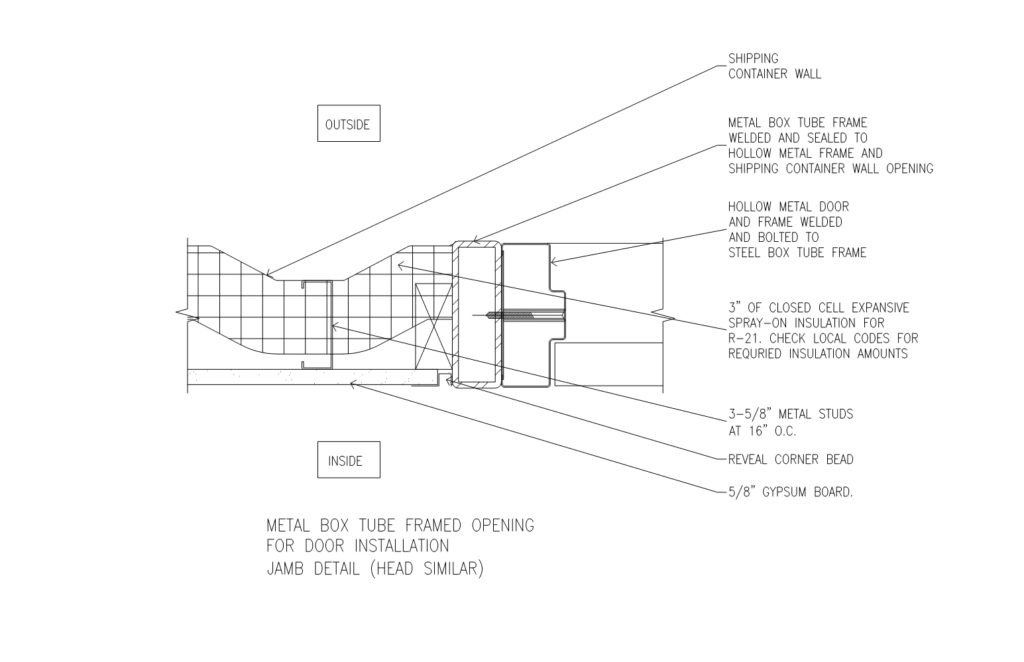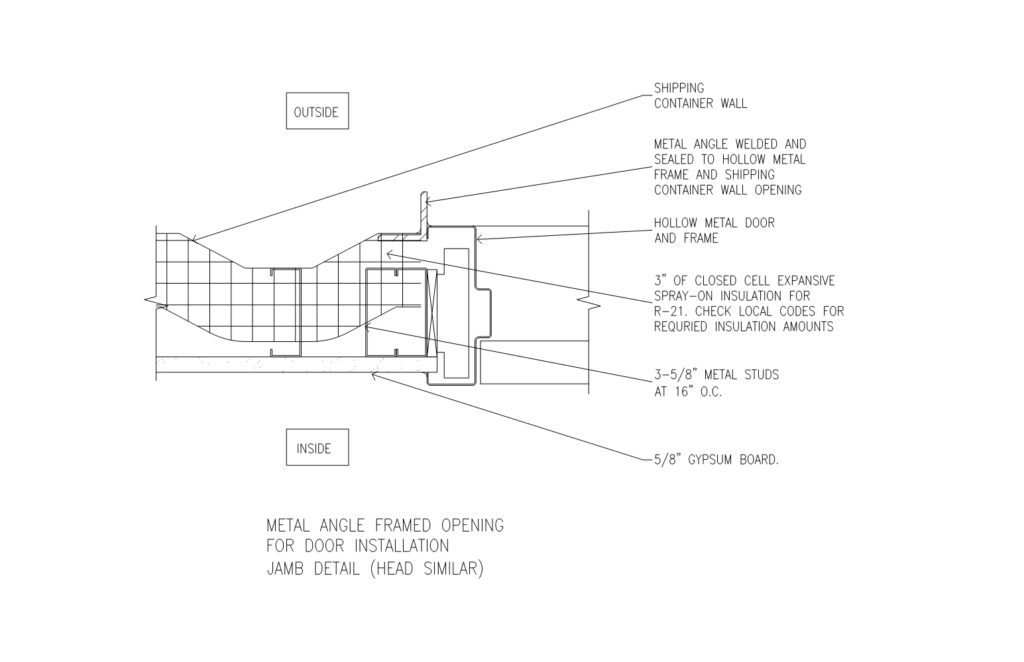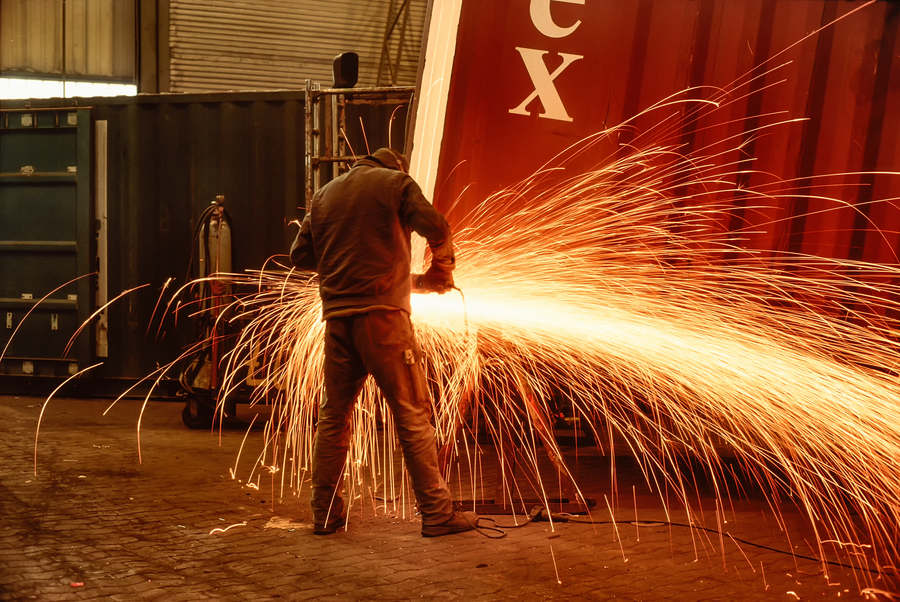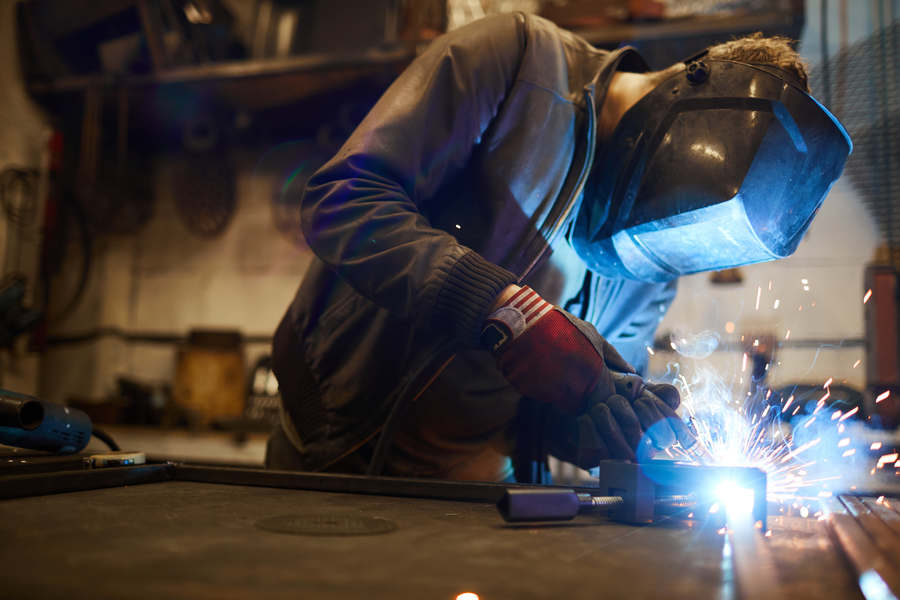How To Put A Window In A Shipping Container
A Building made from a shipping container needs doors for people to enter and windows to bring in natural light. Installing doors and windows in a shipping container is a little different than installing them in conventional stick and brick construction.
Selecting the Doors, Windows and Their Frames
Contents
Door and window types come in several different materials and sizes. Each will affect the way you will install them.Reading: how to put a window in a shipping containerThe shipping containers are constructed with a Cor-Ten steel. Some metals react differently to others. For example, mixing steel with aluminum can cause the aluminum that is touching the steel to corrode through a process called galvanic corrosion.Painted aluminum and steel helps to separate the dissimilar metals from corrosion. Using stainless steel screws, bolts, nuts, washers can also help separate the raw aluminum from the raw steel.Choosing steel, wood, or other non-metallic doors and windows will help you bi-pass any concern of galvanic corrosion.The thickness of the wall will be determined by the amount of insulation is installed, stud sizes, and if there are any exterior elements (like siding, brick, stucco, and/or insulation). The wall thickness will affect how you will frame and install the door and windows.
Select the Size of Tube or Angle to Use for the Box Section Frame
Have an architect or engineer size the tube steel or angle for the framing around your shipping container’s doors and windows. The amount of structural load placed on the opening and the depth of the finished wall will need to be considered when determining the correct size of the steel tube or angle for the framing of the openings.The box section frame will be built with either a steel tube that is square or rectangular. Although, some builders prefer to use steel angles.Tube steel and angles have their own advantages.
Pros and Cons of Using Steel Tubes to Frame the Door and Window Openings
Using a tube steel to frame around the opening, there is a complete and continuous surface from the front exterior face of the shipping container to the full depth of the insulated and finished wall. The depth of the actual door or window frame should match the depth of the tube steel frame. This makes it easy to have a surface to install the door and window frames onto without having to add studs around the opening.But, when cutting the opening in the shipping container’s wall can be a little difficult. Because of the shipping container walls are not flat but corrugated, the cutting of the opening while passing along the valleys and ridges of the corrugation can cause the cut not to be exactly straight and square.If the opening in the shipping container wall is not straight and square, there will be gaps in some areas that might be too big to fill with a bead of weld.Also, the water tightness at the intersection of the tube steel and the shipping container opening will be sealed only with the integrity of the weld and the beading of sealant along this connection. If the shipping container is to be built in a hot, dry location, the beading of sealant can deteriorate and allow water to enter the building at its cracks.
Pros and Cons of Using Steel Angles to Frame the Door and Window Openings
Install a steel angle to frame the opening by placing the back leg of the angle along the inside face of the shipping container wall with the other leg sticking out. Doing this will cover any irregularities along the cut opening in the shipping container wall because the back leg overlaps those gaps.This helps make the opening water tight and easy to seal. The water tightness is not strictly relying on the sealant but also from the overlapping metals.Read more: how to defeat the moon lordUnfortunately, there is not a full surface along the opening for the door or window frame to be installed against. So, there will need to be additional studs used on the inside face of the shipping container wall to match the depth of the tube steel frame.
Cut and Weld the Box Section Frame Together
Having the actual door or window frame on site will allow you to measure exactly the size the box section or the angle needs to be.You want the inside dimensions of the metal frame to be close to the same dimension of the outer frame of the doors and windows. But, allow for any irregularities. Also, allow an additional small amount to fit the door and windows into the metal frames. This additional small amount can be fill with sealant once the doors and windows are installed.Since door frames do not have a bottom support, like the sill of a window, you should cut and weld a temporary support bar between the vertical legs at the bottom of the box frame. This will help to keep the box frame square when installing it into the opening.Without the support bar, the box frame can rack into an angle causing it to be short from being square. Even if you measured the pieces exactly right, if the box frame racks, then the door frame will not fit into the box frame opening.
Mark Where the Door and Window is to be Installed Onto the Container Wall
Here’s a tip that will make it easier to hold the box frame against the container wall while tracing around it for the cut line.Weld two 1/4″ thick x 3″ x 6″ steel support plates on top of the bottom rail of the shipping container. These temporary plates are to be placed under the bottom of each vertical parts of where the box section frame are going to be placed. The plates will support the box section frame when holding it up against the container wall to be traced.Use a piece of chalk, soft pencil, or felt tip marker (only if you are planning to paint over the marker later) to draw the cut line around the box frame.When tracing around the box section frame, draw the mark no more than 1/16″ larger than the projection of the box frame to the side of the container wall.After the opening for the door is marked on the container wall, remove the two temporary metal support plates and grind the remaining surfaces smooth.
Cut the Door and Window Openings with a Hand Grinder

Welding the Box or Angle Section Frame into the Container Wall
Before you start welding the metal frame onto the shipping container walls, make sure that the walls haven’t bowed out since cutting the openings. If it has bowed out you will need to either weld some temporary hooks on the side and pull the wall back to position with a roped tied back beyond. Or, temporarily weld a metal stiffener at the bow to straighten it out.Use tack welds at first to initially fix the frame onto the container wall along the sides and then top and bottom of the box or angle section frame.Read more: How To Be Seductive – The Six Principles of Seduction And SexinessNext, place a full weld across the top of the frame.Then, place welds that are 4″ long and along each side of the frame.Following that, weld a 1″ stitch weld at 10″ to 12″ on center (o.c.) all along the sides and bottom of the box or angle section frame.Here is a link to a YouTube video that shares how to safely weld at Welding Safety Video.
Install the Door or Window within the Connected Box or Angle Section Frame
As mentioned above, connecting Aluminum door or window frames to the steel box frames can cause galvanic corrosion.Use neoprene washers or pads, wood blocking, PVC shims, or plastic separators to isolate the dissimilar materials. Painted surfaces can also help at reducing the threat of galvanic corrosion. But, be aware that any screw holes will not have the protective paint in them.Mechanical connectors, like stainless steel screws, will limit the possibility of corrosion too.Some shipping container home builders do not use any mechanical fasteners when connecting their doors and windows within the box or angle section frames. Instead, they rely upon the strength and durability of the construction adhesives.This way, they are not cutting additional holes into the frame that can cause corrosion and water infiltration. But, I have not seen enough to be fully satisfied that it is a better method than using mechanical fasteners.
Seal All Joints Around the Door or Window
All gaps need to be filled with a continuous bead of sealant.Choose a sealant that will look good with the other finishes of your house in exposed areas. Sealants come in a lot of colors. Some are paintable. So, you can paint the sealant when you are painting the frames and walls the sealant comes in contact with.
Install Finishes Around Door and Window
Finishes come in too many variations to be fully discussed in this article. But, when installing the doors and windows, keep in mind how they will meet up with any interior or exterior finishes you will have.Usually, the interior finish will be in line or slightly proud (further into the room) from the surface of the door or window frame. Knowing where your interior finished wall is going to be will help you determine how deep your box section (if you choose to use a box section instead of an angle section) will be.When installing exterior finishes (like siding, stucco, exterior insulation, masonry), you will want to install flashing between the outer face of the shipping container and the exterior finishes. Make provisions as to not trap water against the shipping container walls by using vapor barriers, weeps, and air spaces (where appropriate) between the shipping container exterior wall and the exterior finishes you choose to install.Any exterior finish you select will affect the way you finish out around the doors and windows. Some ways that are used to finish out the exterior walls at door and window openings are to use wood, PVC, or metal trim around the openings. The trim can hide any irregularities where dissimilar finishes meet each other.For more information about how to install siding onto your shipping container, go to How to Install Siding on a Shipping Container.
Safety Concerns When Installing a Door or Window
The use of power tools and working around heavy sharp metal edges exposed when cut, requires the people working around them to exercise all safety precautions.Do not try to do all of this alone. It is faster and safer to have another person help you install the doors and windows. Just be sure that everyone understands how to safely work in this type of environment.Read more: how to get refrigerator taste out of food
Tools Needed
- Steel Box Section Frames or Steel Angles
- Box Section Support Plates or Steel Angles for a Support Bar
- 240V Welding Set (Here is a link to a entire beginner’s welding set on Amazon)
- Hand Grinder (Here is a link to a hand grinder on Amazon)
- Power Drill (Here is a link to a Power Drill on Amazon)
- Spirit Level (Here is a link to a spirit level with magnets that work great with the metal shipping container walls on Amazon)
- Tape Measure (Here is a link to my favorite brand of various length of Tape Measure on Amazon. I use this all the time!)
- Impact Driver (Here is a link to a good Impact Driver on Amazon)
- Chalk or Chalk Pen (Here is a link to a Chalk Pen package of 6 on Amazon)
- Hammer or Mallet (Here is a link to a Hammer on Amazon)
- TEK Screws (Here is a link to TEK screws on Amazon. Be sure to select the size you need)
- Paint Roller and Tray (Here is a link to a paint roller and tray package on Amazon)
- Pop Riveter (Optional) (Here is a link to a Pop Riveter on Amazon)
- Industrial Sealant
- Gloves (Select the size you need in a leather Welder’s Glove. Here is one on Amazon)
- Sealant
- Construction Adhesive (Here is a link to a Construction Adhesive on Amazon. It is also mentioned in the article, “How to Attach Siding to a Shipping Container”)
- Pull Overs (Optional)
- Magnetic Square (Here is a link to a Magnetic Square that is great for welding found on Amazon)
Last, Wallx.net sent you details about the topic “How To Put A Window In A Shipping Container❤️️”.Hope with useful information that the article “How To Put A Window In A Shipping Container” It will help readers to be more interested in “How To Put A Window In A Shipping Container [ ❤️️❤️️ ]”.
Posts “How To Put A Window In A Shipping Container” posted by on 2021-10-20 03:09:10. Thank you for reading the article at wallx.net






